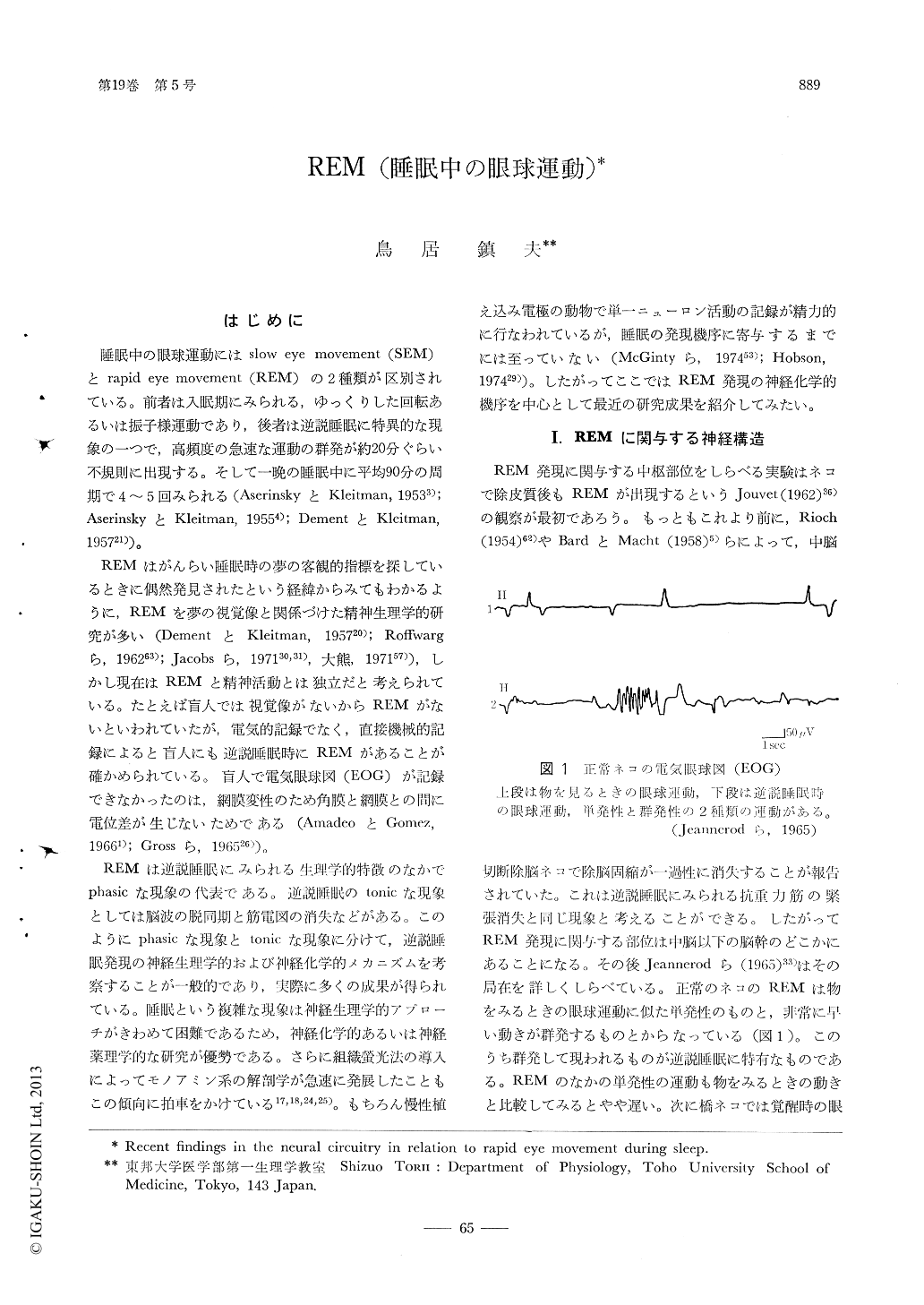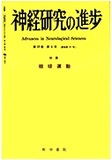Japanese
English
- 有料閲覧
- Abstract 文献概要
- 1ページ目 Look Inside
はじめに
睡眠中の眼球運動にはslow eye movement(SEM)とrapid eye movement(REM)の2種類が区別されている。前者は入眠期にみられる,ゆっくりした回転あるいは振子様運動であり,後者は逆説睡眠に特異的な現象の一つで,高頻度の急速な運動の群発が約20分ぐらい不規則に出現する。そして一晩の睡眠中に平均90分の周期で4〜5回みられる(AserinskyとKleitman,19533);AserinskyとKleitman,19554);DementとKleitman,195721))。
REMはがんらい睡眠時の夢の客観的指標を探しているときに偶然発見されたという経緯からみてもわかるように,REMを夢の視覚像と関係づけた精神生理学的研究が多い(DementとKleitman,195720);Roffwargら,196263);Jacobsら,197130,31),大熊,197157)),しかし現在はREMと精神活動とは独立だと考えられている。たとえば盲人では視覚像がないからREMがないといわれていたが,電気的記録でなく,直接機械的記録によると盲人にも逆説睡眠時にREMがあることが確かめられている。盲人で電気眼球図(EOG)が記録できなかったのは,網膜変性のため角膜と網膜との間に電位差が生じないためである(AmadeoとGomez,19661);Grossら,196526))。
This review will concern with only a few of the more significant trends of the last decade in the field of research on neurochemical mechanisms of rapid eye movement (REM) during paradoxical sleep.
Recent histochemical technique have confirmed the presence of ascending monoaminergic and cholinergic systems in the reticular core of the brain stem. The monoaminergic system has been considered as being responsible for the appearance of the phasic phenomena of paradoxical sleep.

Copyright © 1975, Igaku-Shoin Ltd. All rights reserved.


